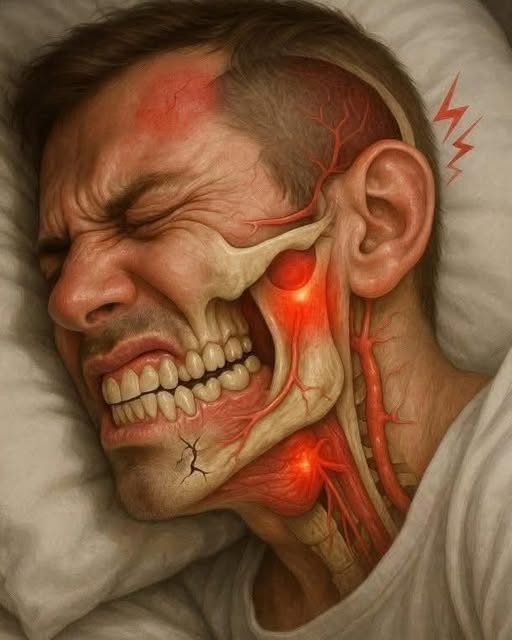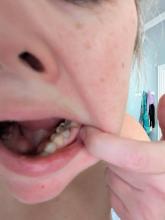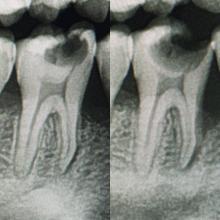Your Smile, Perfected with Precision.
The Unseen Burden of Stress: When Your Mind Grinds Your Teeth to Dust
Language :

Topics:
The Unseen Burden of Stress: When Your Mind Grinds Your Teeth to Dust
We often compartmentalize stress as a mental health issue, but its most destructive manifestations can be physical—and one of its primary targets is your oral health. The link between chronic stress and dental problems isn't merely anecdotal; it's a direct, biomechanical relationship often channeled through a condition known as bruxism.
Moving beyond the simplistic idea of "grinding teeth in your sleep," bruxism is better understood as a parafunctional activity—an unconscious, often destructive use of the jaw muscles. It's a silent, persistent force of erosion that compromises the structural integrity of your mouth and echoes throughout your body.
The Biomechanics of Destruction: What's Really Happening in Your Jaw
When bruxism takes hold, the forces generated are not normal. They are catastrophic by dental standards.
-
Extreme Pressure: The jaw can exert pressure exceeding 250 kilograms—a force greater than that used to chew a tough piece of meat. This is not a functional force for eating; it is a destructive one.
-
The Domino Effect of Damage: This immense, repetitive stress initiates a cascade of structural failures:
-
Enamel Breakdown: The protective enamel, the hardest substance in the human body, is slowly abraded, thinning and weakening.
-
Micro-fractures and Chips: The integrity of the tooth is compromised, leading to tiny cracks and fractures that can grow over time.
-
Restoration Failure: Dental work like crowns, fillings, and implants, which are not as resilient as natural tooth structure, are at high risk of damage or failure under such strain.
-
Gum Recession: The excessive force can traumatize the periodontal ligament, leading to bone loss and the recession of gum tissue.
-
Beyond the Jaw: The Systemic Consequences
The impact of bruxism is not confined to the teeth. The epicenter of this activity is the Temporomandibular Joint (TMJ), a complex, delicate hinge that bears the brunt of the force. Inflammation and dysfunction here, known as Temporomandibular Joint Disorder (TMD), can produce a surprising range of symptoms:
-
Chronic Headaches and Migraines: Often misdiagnosed, these are frequently traced back to strained jaw and temple muscles.
-
Otalgia (Ear Pain) and Tinnitus: The proximity of the TMJ to the ear canal means inflammation can manifest as ear pain, a feeling of fullness, or a persistent buzzing or ringing.
-
Limited Mandibular Movement: Pain or a clicking sensation when opening the mouth wide is a classic sign of joint distress.
-
Vertigo and Dizziness: In severe cases, the inflamed joint can affect proprioception and balance.
The Stress Connection: More Than Just Anxiety
While stress and anxiety are primary catalysts, the causes are multifaceted. Respiratory issues, such as sleep apnea, can trigger a grinding response as the body attempts to reopen the airway. It is also prevalent in children, often linked to growth, teething, or other underlying conditions.
Decoding the Silent Signals: Early Warning Signs
Bruxism often goes unnoticed until significant damage has occurred. Vigilance for these subtle indicators is crucial for early intervention:
-
Dental hypersensitivity to hot, cold, or sweet stimuli.
-
Unexplained pain or fatigue in the jaw muscles while chewing.
-
A noticeable flattening or shortening of the teeth.
-
Gum tissue that appears to be pulling away from the teeth.
-
A feeling of facial tightness or asymmetry upon waking.
-
Jaw stiffness, pain, or audible cracking sounds when you first get out of bed.
A Proactive Protocol for Management
Addressing bruxism requires a dual approach: protecting the physical structures and mitigating the root causes.
-
Professional Intervention: A custom-fitted night guard, fabricated by a dental professional, is the cornerstone of treatment. It does not stop the grinding but creates a protective barrier that redistributes destructive forces, safeguarding the teeth and joints.
-
Behavioral and Lifestyle Modifications:
-
Stress Reduction: Incorporate proven relaxation techniques such as mindfulness, meditation, or cognitive behavioral therapy (CBT) to lower the overall stress load.
-
Dietary Adjustments: Eliminate stimulants like caffeine and depressants like alcohol, especially in the evening, as they can exacerbate clenching and grinding.
-
Muscle Re-education: Perform prescribed jaw exercises to release tension, improve range of motion, and retrain the muscles to rest in a neutral position.
-
In conclusion, viewing bruxism as merely a dental issue is a critical oversight. It is a whole-body condition with a dental epicenter. By recognizing it as a physical symptom of massive stress, you can take proactive steps to protect not just your smile, but your overall well-being.







